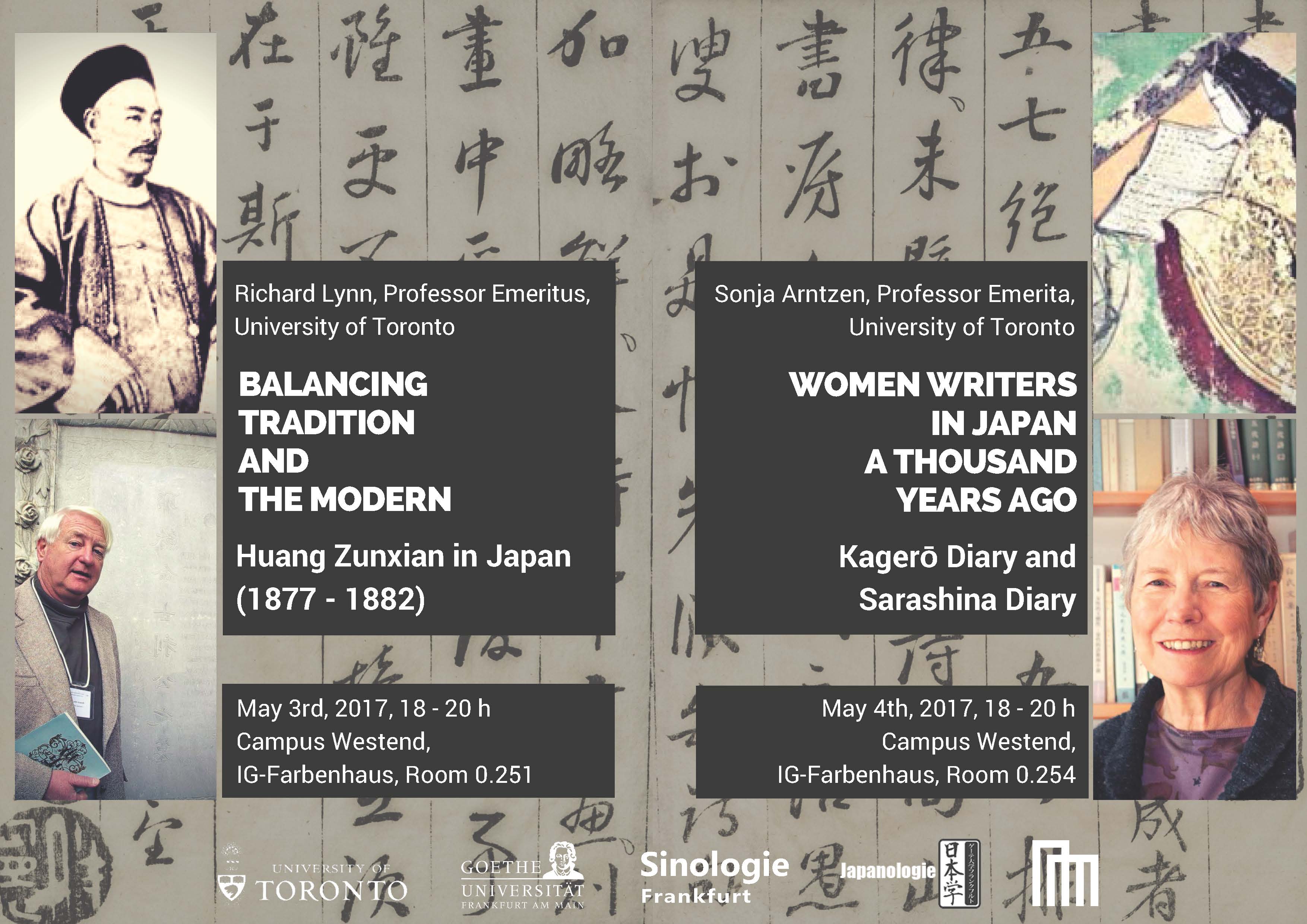Vortrag Prof. Dr. Sonja Arntzen
Talks by Prof. Dr. John Lynn and Prof. Dr. Sonja Arntzen
Richard John Lynn and Sonja Arntzen, an academic couple and renowned scholars from the University of Toronto, will give two talks on Chinese and Japanese literature and on their mutual influences. The talks are organized by Chinese and Japanese studies at Goethe-University.

Richard John Lynn (Professor Emeritus, University of Toronto): "Balancing Tradition and the Modern: Huang Zunxian in Japan (1877-1882)"
May 3, 18:00-20:00 c.t., IG-Farbenhaus 0.251
The great Chinese poet Huang Zunxian (1848-1905), who served from 1877 to 1882 on the staff of the Qing legation in Tokyo, became closely acquainted with many prominent Japanese literati (bunjin), the interaction with whom provide a valuable window of information and insight into both the cultural atmosphere of early Meiji Japan and the attitude of reform-minded Chinese intellectuals then resident there. Equipped with the unique bundle of skills of a Chinese literatus, Huang had direct access to the discourse and thought of his hosts, so could form discriminating views of all aspects of Japanese life in a rapidly changing era. His experience is captured in more than 200 seven-syllable quatrains in the two editions of his Riben zashi shi (Poems on Miscellaneous Subjects from Japan, 1879 and 1890). Huang intended his work to have more than literary impact—to enlighten those who wielded power in China by casting modernizing Japan in a positive light and convincing readers that Japan was an appropriate model for reform and modernization, that by modernizing and joining the international community Japan did not sacrifice tradition but was creatively preserving it. To account for Japan’s preservation of tradition, Huang linked Japanese tradition with the Chinese, which he did in poems emphasizing their common high culture, “This Culture of Ours” (siwen/shibun). The scope of the poems is broad: Japanese history and geography, Sino-Japanese cultural relations throughout history, elements of Chinese culture in Japan, including poetry (kanshi) and prose (kanbun), painting and calligraphy, Confucianism and Buddhism, as well as the Meiji Restoration and modernization, with special attention to new political and social institutions, the Diet, local government, political parties, museums, police, army and navy, fire control, taxation, the postal system, education reform, women’s education, the status and social roles of women—many subjects unknown to earlier tradition but now topical and urgent as China began to shed old ways and embrace the new.
Sonja Arntzen (Professor Emerita, University of Toronto): "Women Writers in Japan a Thousand Years Ago: Kagerō Diary and Sarashina Diary"
May 4, 18:00-20:00 c.t., IG-Farbenhaus 0.254
This illustrated talk will explore the efflorescence of women’s writing in Japan in the 10th and 11th centuries. Focusing on two autobiographical texts, the Kagerō Diary (c. 974) and the Sarashina Diary (c. 1060), which bracket the golden age of women’s writing, it will address the conditions that promoted women’s writing, encouraged its circulation even before the development of print culture, and have kept these writings relevant for more than a millennium. The lecture will also discuss a shift in Heian period religious consciousness that is apparent between the two diaries, a shift that eventually discouraged women’s writing in the later medieval period.




